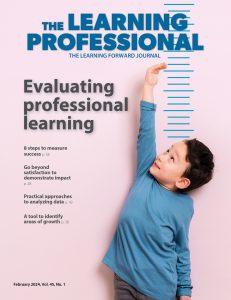The COVID-19 pandemic has forced many changes in the way K-12 schooling happens in the United States. Two of the most central changes are the shift to digital curriculum and instruction, and the evolving role of parents and caregivers into co-teachers. We want to imagine ways in which the nexus of these shifts could be a newfound opportunity to remodel K-12 schooling, instead of the direct threat to equity we have seen so far.
COVID-19 has exposed and exacerbated structural inequities at the core of American society and schools. Disparities in everything from access to basic material needs to learning opportunities have been made even more stark. Families with more resources, time, and educational levels are at a distinct advantage in a time when families are playing a larger role than ever. In the span of six months, we pivoted from adults at home supporting what is done in the classroom to the home being the classroom. Although all families can support their children’s learning, and families from all backgrounds want to do so, we are seeing troubling trends in the affordances of more affluent families.
For example, learning pods are a recent grassroots phenomenon where parents who can afford to do so are paying educators to supervise and support the virtual learning of small groups of children. These families and their educator practice social distancing in a manner that does not sacrifice, and in some instances, may enhance their children’s educational experiences. There are a lot of reasons why this model makes sense, not only from a public health perspective, but also pedagogically. Smaller student-teacher ratios mean more opportunities for individualized learning experiences and time to build strong, caring relationships.
Yet pods have the strong potential to make inequities worse, primarily through opportunity hoarding, or controlling resources in a manner that excludes others from accessing them. There have been examples of cities (e.g., San Francisco) working to mitigate the potential for opportunity hoarding in pods, and there are resources out there for parents and educators to consider together how to promote equity in the midst of pandemic schooling.
But instead of a family-by-family strategy for education during the pandemic, we need systemic changes and supports to prevent widening opportunity gaps during virtual and hybrid learning. We need to equitably support parents as co-teachers in digital learning. All educators can and should play a role in these efforts, and building educator capacity to do so is an important goal for professional learning today.
Leverage points for building equity
In our study of the implementation and impact of digital tools in K12 education in two diverse, low-resource urban school districts—Dallas Independent School District and Milwaukee Public Schools—we saw a wide range of educational technology integration. We analyzed data from the school districts and technology vendors and conducted hundreds of observations of digital learning in classrooms and in online settings. Through our decade of research with these district partners, we identified four “leverage points” for increasing equitable student learning in digital spaces. For each of these leverage points, which are listed below, we pose reflection questions relevant to how local educational agencies, working with teachers, parents, and students, can best support and promote equity and quality in a range of digital learning settings.
Here are four “leverage points” for increasing equitable student learning in digital spaces. Click To TweetLeverage point 1: Structure policies, contracts, and budgets to provide transparency and resources for implementation, emphasize equity in resource allocations, and engage parents in decision making.
Questions for reflection:
- Do school and district budgets reflect equity (meeting people where they are and getting them what they need) versus equality (everyone gets the same)? Consider both essential physical infrastructure (digital devices, internet access) and educational resources (teachers’ time, quality of instructional material, and strategies used).
- Are schools (and the educators within them) advocating for all students’ and families’ basic needs to be met, so they have the necessary foundations for learning?
- What would it take for school and district budgets to reflect parents as teaching partners?
- What is the role of parents in deciding which digital platforms to use and contract with?
Leverage point 2: Offer targeted and continuous learning opportunities to build the capacity of educators and families to work together in implementing digital learning effectively.
Questions for reflection:
- What specific supports do classroom teachers need in order to engage with all families about digital learning? For example, do they need to learn how to connect multilingual families with translation and interpretation services?
- Do families have access to training and support about using the digital tools and understanding pedagogic approaches common with virtual learning? If not, consider how to put these supports in place.
Leverage point 3: Prioritize student-centered and responsive instruction designed to facilitate authentic student work.
Question for reflection:
- What would it mean for parents and students to be seen as experts in their own cultural contexts and partners in designing curriculum and instruction that reflects and sustains those cultural contexts?
Leverage point 4: Build capacity for research and evaluation.
Questions for reflection:
- Does your school ask parents and students to review digital platforms? If so, how can you make sure all families have access to and information about the platforms so that all voices can be heard?
- How could parents and students have a role in collecting feedback from other parents about digital platforms, for example by using a participatory evaluation approach?
A vision for more equitable learning
The COVID-19 crisis presents an opportunity to reflect on current practices. Our goal should not be to eventually “get back to normal,” because that was never a model that equitably supported all students in engaging, humanizing, and rigorous ways. We must ask ourselves: What in the traditional model of schooling should be changed to really support learning, perhaps incorporating the digital tools we’re experimenting with now? Which students would benefit most from a different learning model, and at what points in their learning trajectory? What roles can parents and caregivers play in this new model?
If used within a redesigned equity-focused, student-centered, and parent-engaged educational system, digital learning can be instrumental in reducing – rather than amplifying – structural inequities.










